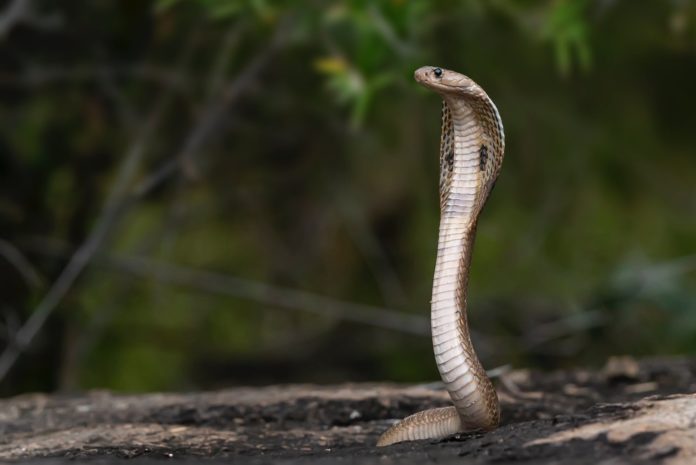Snakes and primates have a multi-layered coevolutionary history as predators, prey, and competitors with each other.
According to University of Queensland-led research, the last common ancestor of chimps, gorillas and humans developed an increased resistance toward cobra venom.
The research team studied that, within the Afro-Asian primates, the increased resistance toward the neurotoxins (synthetic nerve receptors) was significantly amplified in the last common ancestor of chimpanzees, gorillas, and humans (clade Homininae). While the resistance could not be found in Lemuriformes in Madagascar, where venomous snakes are absent, and those from the Americas – where the cobra-related coral snakes are small, nocturnal, and burrowing.
“As primates from Africa gained the ability to walk upright and dispersed throughout Asia, they developed weapons to defend themselves against venomous snakes, this likely sparked an evolutionary arms race and evolving this venom resistance,” Mr. Harris said.
“This was just one of many evolutionary defences – many primate groups appear to also have developed excellent eyesight, which is thought to have aided them in detecting and defending themselves against venomous snakes.”
“But Madagascan Lemurs and Central and South American monkeys, which live in regions that haven’t been colonised by or come in close contact with neurotoxic venomous snakes, didn’t evolve this kind of resistance to snake venoms and have poorer eyesight.”
“It’s been long-theorised that snakes have strongly influenced primate evolution, but we now have additional biological evidence to support this theory.”
Team leader Associate Professor Bryan Fry said the study also revealed that in the last common ancestor of chimpanzees, gorillas, and humans, this resistance was sharply increased.

“Our movement down from the trees and more commonly on land meant more interactions with venomous snakes, thus driving the evolutionary selection of this increased resistance,” Dr. Fry said.
“It is important to note that this resistance is not absolute – we are not immune to cobra venom, just much less likely to die than other primates.”
“We have shown in other studies that resistance to snake venoms comes with what’s known as a fitness disadvantage, whereby the receptors don’t do their normal function as efficiently, so there is a fine balance to be struck where the gain has to outweigh the loss.”
“In this case, partial resistance was enough to gain the evolutionary advantage, but without the fitness disadvantage being too taxing.”
“We are increasingly recognizing the importance snakes have played in the evolution of primates, including the way our brain is structured, aspects of language and even tool use.”
“This work reveals yet another piece in the puzzle of this complex arms race between snakes and primates.”
The research was a collaboration between UQ and Oxford-Brookes University’s Dr. Anna Nekaris.
Journal Reference
- Harris, R.J., Nekaris, K.AI. & Fry, B.G. Monkeying around with venom: an increased resistance to α-neurotoxins supports an evolutionary arms race between Afro-Asian primates and sympatric cobras. BMC Biol 19, 253 (2021). DOI: 10.1186/s12915-021-01195-x
